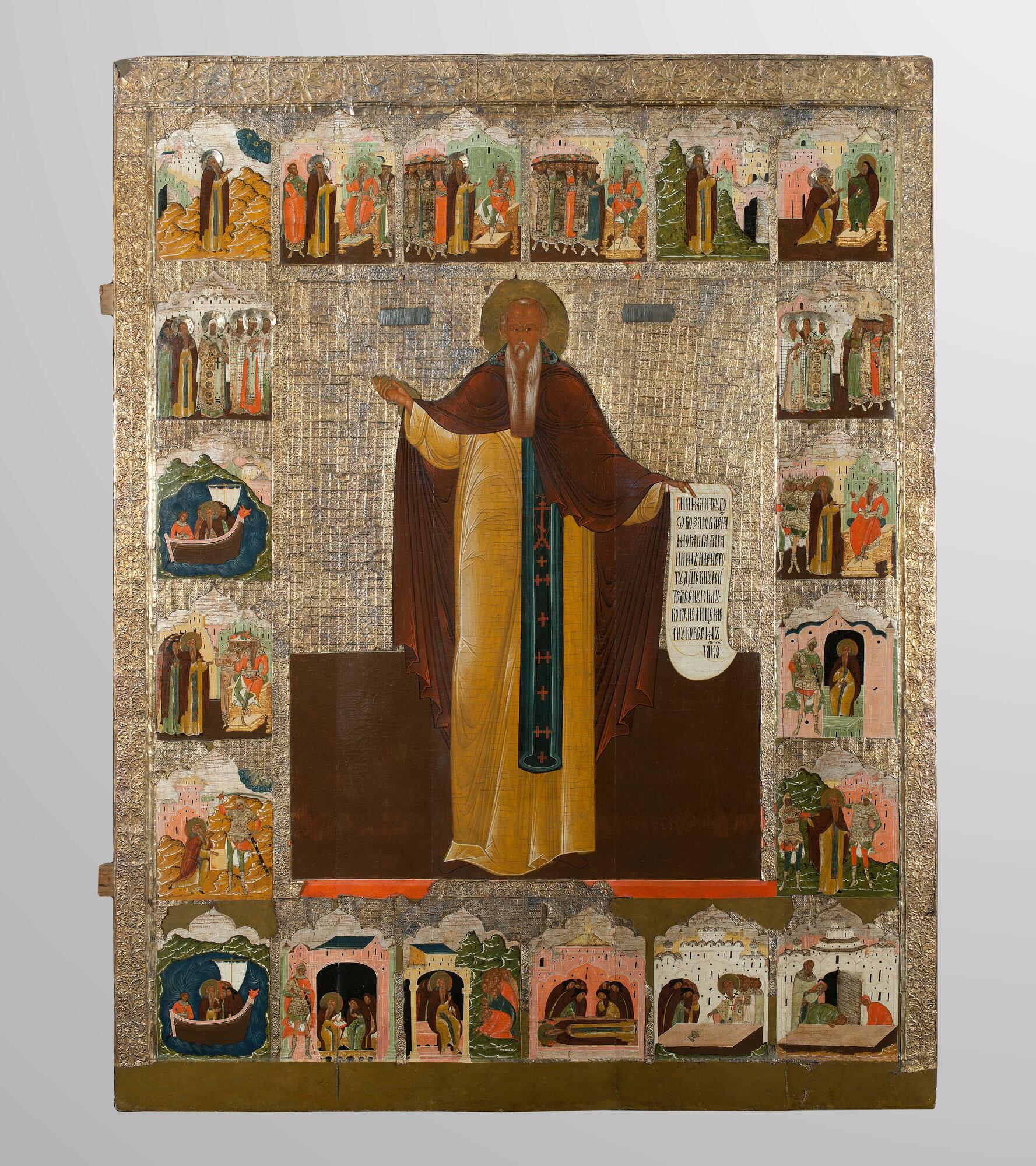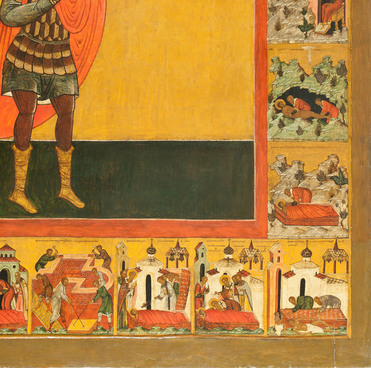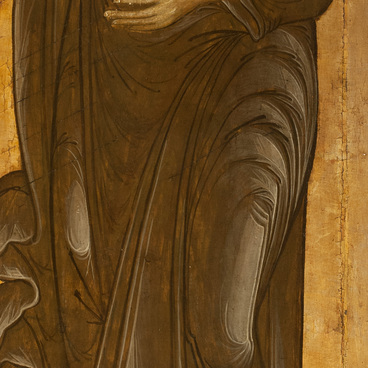The famous saint Maximus the Confessor was born in Constantinople, the Byzantine Empire, and lived in the 6th and 7th centuries. The saint received his title because he suffered for the Christian faith. He devoted his whole life to the courageous fight against the heresy of Monothelitism promoted by the Byzantine Emperor Heraclius and the Patriarchs of Alexandria and Constantinople.
Monothelitism arose in the early 7th century as a new form of Monophysitism. According to this theological doctrine, Christ had only one will and one energy, thus diminishing the fullness of Christ’s humanity. According to the Orthodox doctrine, the will is the continuation of one’s nature, not of a person, and therefore Jesus Christ as God by nature and human by nature had both the divine will and the human will. Without the latter He would not have been human by nature.
The centerpiece depicts Maximus the Confessor in full height. He wears a dark brown monk robe, a light ochre chiton, and a blue schema on his chest. With his right hand, the saint makes a blessing gesture, and in his left hand, he holds a scroll with the following text, “Take heed, O my beloved brethren. Have a pure mind and body and love all people sincerely.”
The border scenes around the centerpiece show the main events in the saint’s life. These are “St. Maximus Praying on his Way to Constantinople”, “St. Maximus Denounces the Heresy of Monothelitism Before the Emperor”, “St. Maximus Reproaches the Emperor and Denounces the Heretics Gathered by Him”, “The Emperor Demands That the Monothelites Force St. Maximus to Silence”, “St. Maximus Goes to Pope Martin in Rome”, and others.
The icon was one of the
main local icons at the Annunciation Cathedral. Before being taken away for
restoration, it was placed on the southern pillar of the summertime church. The
icon was donated by Maxim Yakovlevich Stroganov. This is evidenced by the round
stamp on the reverse side of the icon which was typical of the icons donated by
him. It reads,


